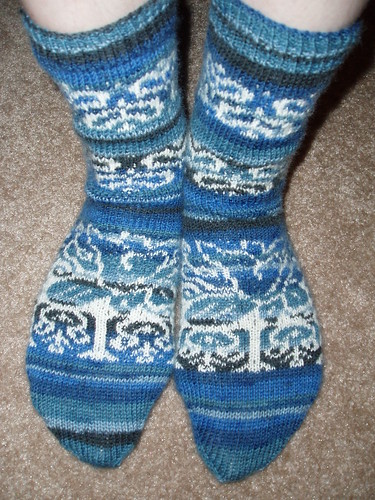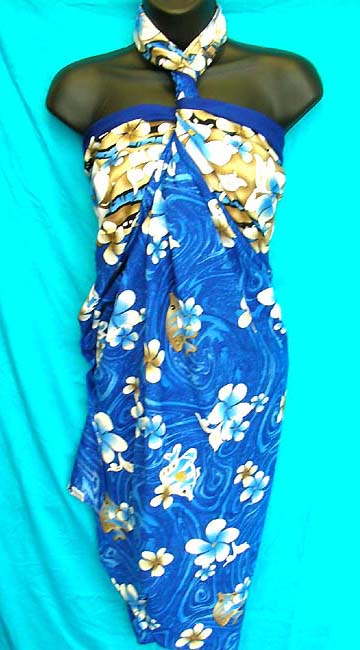


Many frequently associate batik, the hand-dyed textile unique to the archipelago, with Surakarta, Yogyakarta and Pekalongan. While the first two cities are famous for their standard motifs, like flaming gringsing, princely parangrusak and bridal sidomukti, Pekalongan's batik designs are not set, so are as free as that coastal culture.
Another unique batik tradition can be found in the Central Java town of Lasem. Although both are coastal areas of the province, Pekalongan and Lasem have different batik motifs, owing to the two communities' dissimilar creative efforts and cultural influences.
Pekalongan batik are made by indigenous Javanese of Arab descent who produce floral designs, whereas Lasem batik are created by Javanese yet reflect a strong Chinese influence in their phoenix, dragon, bamboo and fan patterns, typical of Chinese paintings.
The Chinese reportedly settled in Lasem over 200 years ago. An uncorroborated account even says Lasem was named after the number 63 (lak sam in a southern Chinese dialect) -- part of the fleet of legendary Admiral Cheng Ho from the Zu Di empire of the Ming dynasty.
The tale goes that, as the fleet sailed along the Java Sea in 1413, great storms washed 63 of its junks ashore in Lasem -- hence the town's name.
The Chinese entry to Lasem has also hit the big screen in Ca Bau Kan, a novel by Remy Silado, who also wrote Sam Po Kong, describing Cheng Ho's voyage as far as Semarang, the present-day Central Java capital.
History records that the ethnic Chinese population grew fast along Java's northern coast from Jakarta to East Java, including Lasem.
Located 13 kilometers east of Rembang town, the district town of Lasem is the capital of Rembang regency. Serving as a transit terminal for inter-provincial buses plying Java's northern routes, Lasem has become more famous than Rembang.
The route brings fresh air to the town's handmade batik business, which experienced its golden period in the 1970s.
""There were around 100 batik entrepreneurs in Lasem. Its batik shot to fame back then,"" said Purnomo, 56, a batik maker who specializes in stamped horse motifs.
Lasem's handmade batik centers are found in subdistricts such as Gedongmulyo, Babagan, Karangsuri, Sumbergirang and Karanggede.
Purnomo employs 30 workers in his cottage industry in Gedungmulyo, Lasem. The area has many mansions with tall walls, heavy dragon-relief doors and ash-bowl altars for ancestral worship, resembling a Chinatown.
It is in these large residences that hand-printed batik production formerly enjoyed its heyday with its typically Chinese themes. Today, though, ""Only around 10 batik houses continue to survive. The handmade batik industry has been in sharp decline since the 1997 economic crisis"", said Purnomo.
Since the rise of machine-printed batik in 1994, handmade batik have been sidelined even further. Far lower in price, the modern products are generally preferred by today's consumers, who mostly seek cheap goods.
""We, as part of the community of batik craftspeople, have lodged protests, but market interest is more decisive. Machine-printed batik maintain their good public reception,"" he acknowledged.
In addition, some people assume that handmade batiks are an ancient and sacred craft, which leaves an impression of the textiles as expensive luxury goods. In actuality, the handmade products are not too expensive either at Rp 100,000 (US$11) for kain panjang (a wrap), though other types can fetch Rp 1 million ($110) or more.
At Lasem Market, a typical handcrafted batik can be bought at only Rp 75,000, while a refined and intricately designed one cloth may cost Rp 1 million -- the latter are often bought by fashion boutiques and major shops.
The artistic value of handmade batiks lies in their motifs and refined texture, and Lasem has five main motifs: tiga negeri, empat negeri, kawung, rawan and kendara-kendiri.
The complicated process of making batik by hand demands higher costs and a longer time compared with machine-made batik. For example, 20 craftspeople can make 100 batik cloths in two months -- or five pieces each.
Some of the phases in the traditional batik-making process are drawing the pattern, resist-dye waxing and dyeing. The latter step itself may involve three stages, and the more colors that are used, the more stages it requires.
The production costs for handmade batik is about Rp 15,000 per piece, in addition to two daily meals for the craftspeople.
Purnomo claimed that before the influx of modern batik to the market, he was overwhelmed by buyers' demand. Today, he only sells about 20 pieces a month.
The Rembang administration has strived to promote Lasem's handmade batiks through participation in business and trade fairs, but the market has not indicated much interest.
Lasem batik was among the work exhibited at a Semarang mall in March, featuring the original hand-printed batik from Pekalongan, Semarang, Kebumen, Puworejo, Demak, Kudus, Pati and Jepara.
""Lasem batik always boast typical Chinese colors, earth red and dark red, which are unique. Batik lovers are well aware of this distinctive feature,"" said Nita Kenzo, the owner of several Semarang boutiques that sell traditional batik.
In Nita's observation, Lasem still lacked the regeneration of its batik makers. She hoped that handmade batik exhibits presenting diverse regional products would raise interest among youths and help boost the spirit of restoring batik craftspeople to relevant areas. Further developments have led to divergent views among batik lovers over the use of natural or synthetic dyes.
For Purnomo, chemical dyes pose no problem.
""Formerly natural materials were used because no chemical colors had been found. In my opinion, chemicals produce better and lasting colors. Soap is now used in laundering instead of the klerak fruit, and after washing the batik, the textile can be dried in the sun without affecting the colors,"" he said.
With regard to handmade silk batik, Purnomo said he liked the material, ""but in this tropical climate, cotton batik is more suitable. Silk batik only suits air-conditioned rooms"".
He spoke sparsely on the lack of training a new generation of batik craftsmen while retaining his elderly workers.
""Young people now prefer jobs other than making batik,"" he said.
Lasem's traditional batik entrepreneurs should perhaps heed the efforts of the Semarang government, which has organized handmade batik courses that attract about 25 participants per class, mostly comprising students, youths and young housewives.
Source : http://www.thejakartapost.com/news/2007/07/27/two-cultures-meet-lasem-batik.html-0

Tidak ada komentar:
Posting Komentar